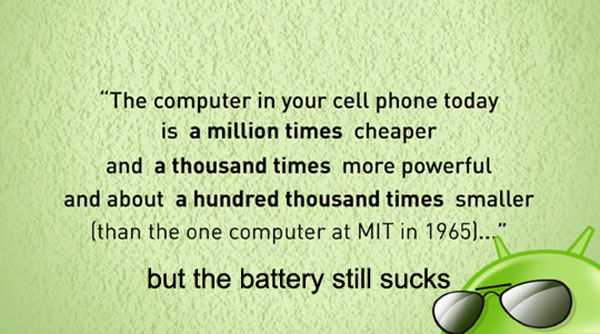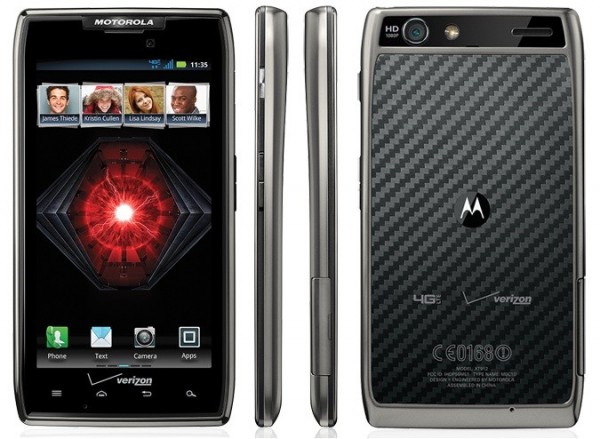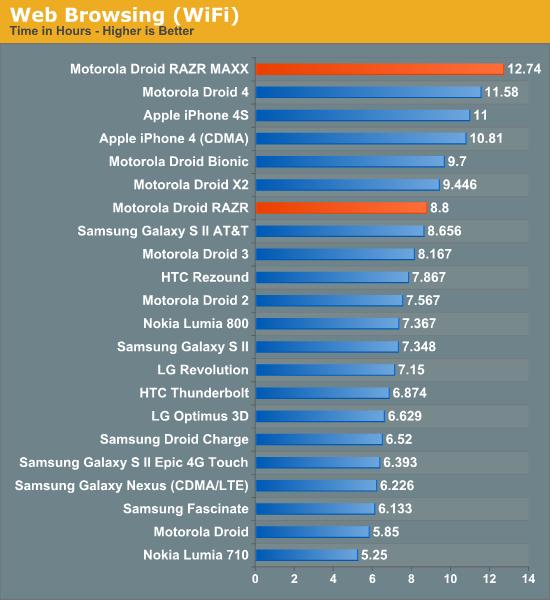Affiliate links on Android Authority may earn us a commission. Learn more.
Where are the long battery life superphones?

There are some people who don’t like smart phones. It isn’t because they don’t like the touch sensitive screen, it’s not an ease of use issue, but rather they don’t like the battery life. In the good old days of feature phones, you could charge up your phone once a week, you could talk for hours, and, if you battery showed only one bar left, you knew it would work for the rest of the day. But not so with smartphones. With a nice bright display to power, plus Wi-Fi, plus GPS, and of course 3G or even 4G, a smart phone battery might last a day, maybe two.
A typical feature phone might use a 1100mAh battery, where as a smart phone could have a 1650mAh battery. Sure, the smartphone has a bigger battery but it isn’t proportionally larger compared to the juice needed to power it. That is with the exception of the Motorola RAZR MAXX that is. The RAZR MAXX sports a high capacity 3300mAh giving 21.5 hours of talk time, 2.5 days of listening to music, and 12 hours of Internet over Wi-Fi use. These numbers seem better suited to a tablet than a phone!

But is that it? Surely, with every forum and smartphone related website carrying articles and tutorials about battery life and how to extend it, more manufacturers would be selling phones with bigger batteries. The answer seems to be no. There are just one or two companies selling phone with better batteries. The Galaxy S3 has a pretty good, 2000mAh+ battery, but they still only last about a day with full usage.
HUAWEI is touting its Ascend D quad as the world’s fastest smartphone, but it is also looking at the battery aspect. Alongside the Ascend D quad, HUAWEI will launch the Ascend D quad XL. It has exactly the same specifications as the Ascend D quad but with a 2500mAh battery, which HUAWEI reckons will last for two or three days with normal usage.
Samsung’s Galaxy Note also has a 2500mAh battery but this only gives it a battery life comparable to the S3 or the HTCOne X. The reason its battery life isn’t better than the S3 is because of its huge 5.3 inch display. The display is the most power hungry component in any smart phone. It doesn’t matter if you are using Wi-Fi or not, if Bluetooth is on or off, or if you have the GPS enabled, whatever you do on your phone (other than listen to music) you need to use the display, and that takes power. The rumors are that Samsung is preparing the Galaxy Note 2 with a even bigger display (possibly 5.5 inches) and it is hoped that Samsung will include a bigger battery, maybe even a 3000mAh one.
So what is the problem? It really is a bit of a mystery. The phone manufacturers are busy adding more features to phones, quad core CPUs, better cameras, larger screens, higher resolutions, but where is the push to add more battery life? The problem shouldn’t be cost related as a 1600mAh battery costs around $5 where as a 4000mAh battery costs $10. So adding $5 to the bill of materials for a bigger battery isn’t a problem, especially when compared to the cost of the display or flash memory. Could weight be a problem? Since phones are designed to be mobile it is conceivable that some manufacturers are concerned about overall weight. But even adding a battery with an extra 500mAh shouldn’t make the device unreasonably heavy.
Is Android to blame?
Leaving the RAZR MAXX to the side, battery tests show that the iPhone 4 and iPhone 4S have quite reasonable battery lives. In the same test that showed the RAZR MAXX supporting 12 hours of Internet over Wi-Fi usage, the iPhone 4S managed 11 hours. But here is the startling thing – the iPhone 4S only has a 1432 mAh battery. That is smaller than the average Android smartphone and more than half the size of the RAZR MAXX’s battery. Could it be that Apple have been able to tweak iOS to consume less power than Android? Is it because Apple own their own ARM chip design team and the chips are made exactly as they want them, rather than having to use off the shelf parts form the likes of Qualcomm or NVIDA?

Or could it just be screen size? As mentioned above, bigger screens require more power. Most of the devices listed in the graphic above have 4 or 4.3 inch displays, except for the iPhone. Apple has stuck rigidly to its 3.5 inch form factor. Instead it has chosen to increase the pixel density and improve the screen resolution. But this is likely to be a huge factor in terms of battery life. Powering a 3.5 inch display for 11 hours of Internet usage requires a lot less juice than powering a 4.3 inch display for the same about of time. Is this why Apple hasn’t released a 4.3 inch phone yet?
What about sealed batteries?
One thing the RAZR MAXX and the iPhone have in common is that the battery isn’t user replacable. It is built into the device and is formed and molded to occupy the entire space available. That is how Motorola managed to keep the RAZR MAXX so thin. But many phone use more traditional batteries that can be quickly popped out by the user. Is this fear of the sealed battery stopping manufactueres from squeezing the most out of the space available?
Let me know your thoughts? Happy with your battery life or do you desperately need something better? What about sealed batteries? Do you think Android is to blame? Are Apple better at getting more from their devices? Please leave a comment below.